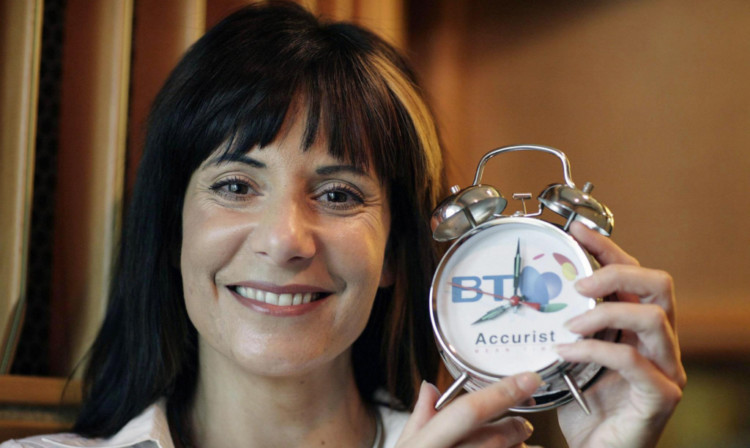Staff at Perth and Kinross Council have cost the taxpayer nearly £1,500 over the past five years by calling the speaking clock.
The £1,438.97 paid by the council is part of more than £14,500 that has been spent by public bodies on the service over the past five years.
North Ayrshire Council is the only public sector organisation to have spent more dialling the speaking clock than Perth and Kinross Council since 2008.
Last year public bodies spent £5,437 calling 123 six times more than was spent five years ago. The Scottish Conservatives are now calling for all councils, health boards and other public bodies to put a block on the number to stop taxpayers footing the bill for the calls.
A Freedom of Information request revealed local authorities have spent £12,947 in the last five years calling the speaking clock, while health boards have amassed £1,551 worth of calls.
Even the Scottish Government has recorded use of the number, spending £30.78 since 2008/9.
The true figure could be even higher as some councils and NHS boards were unable to provide information on how much calls to the speaking clock had cost.
Among the councils, the biggest spenders were North Ayrshire (£2,206), while NHS Lanarkshire staff ran up a bill of £578.32 the most among health boards.
According to BT, it costs 31p to call the speaking clock from a landline telephone. Angus Council has only spent £8.68 although was only able to provide figures for two of the five years.
Dundee City Council spent £63.75 in 2012/13, but the authority did not have figures for earlier years.
Fife Council spent just 16p on the speaking clock last year and said it would be too expensive to provide the information for the four earlier years.
Stirling Council has had to pay £58.16 over the past five years while Clackmannanshire Council has blocked the number so employees cannot use it.
A spokeswoman for Perth and Kinross Council said: “Perth and Kinross Council takes matters of this nature extremely seriously and has taken steps to monitor the situation closely.
“The council dramatically cut the number of calls to this service in 2012-2013 and is fully committed to continue cutting calls to this number in the future.”
Scottish Conservative chief whip John Lamont MSP said: “The total amount may be small in comparison to overall public budgets, but it’s still a hideous waste of money.
“With clocks on mobile phones and computers, there has never been less of a need to call the speaking clock.
“Yet it seems to be occurring more and more, and it beggars belief that more councils and health boards have not put a block on this.
“This waste of taxpayers’ money is the sort of thing that infuriates the public, and undermines savings being made elsewhere in these organisations.”
It emerged earlier this year that the Ministry of Defence had rung up a bill of more than £40,000 over the last two years because of staff calling the speaking clock.
